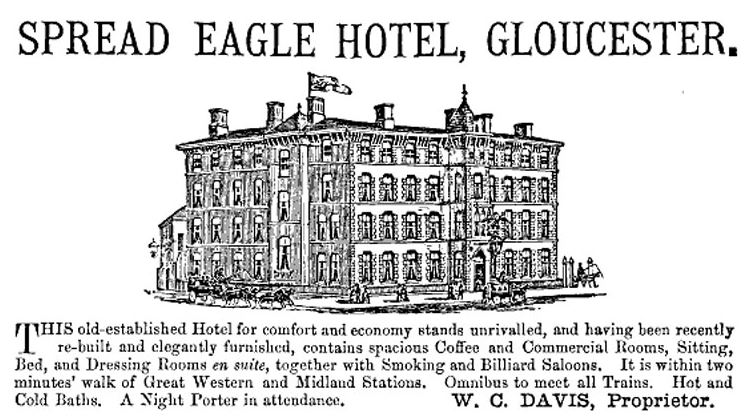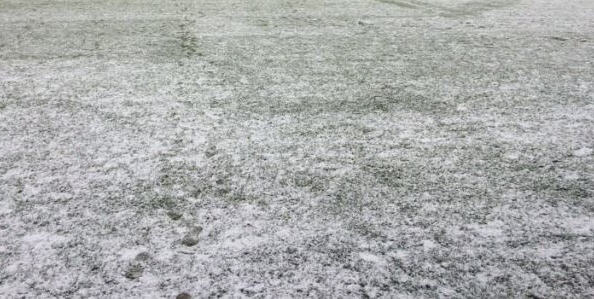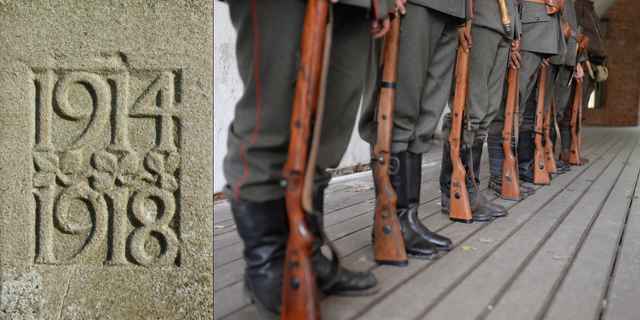Gloucester Rugby has a fascinating history since the club was founded in the early 1870s.
There have been lulls and doldrums but we don’t need to dwell on those. Instead, we’ll cover the most interesting chapters in the story of this great West County club.
When Was Gloucester Rugby Founded?
My view is that the story of Gloucester Rugby starts in London!
Francis Hartley was working as a solicitor in England’s capital. He captained the Flamingoes Rugby Club which was based in Battersea Park.
In 1871, Hartley represented the Flamingoes at the famous dinner in Pall Mall when twenty-one members from various clubs agreed to form the Rugby Football Union (the RFU). He was one of the original thirteen committee members of the RFU.
Hartley moved to Gloucester to join a legal firm in the city. There were several rugby clubs in Gloucestershire but none had been firmly established in the City of Gloucester.
In 1873, Hartley gathered together a group of players to form a scratch team to play against the students at College School (now known as King’s School).
He was only able to muster up ten men on the day but they still took a handsome win against their younger opposition. As news went around the town about the opportunity to play some rugby football, Hartley was able to field teams against Hereford and Worcester.
Despite taking two beatings from the more settled clubs, the growing number of city players wanted to keep going. Several meetings were held in players’ houses before the formal gathering to found the club.
Spread Eagle Hotel, 1873

In September of 1873, a meeting was held at the Spread Eagle Hotel in Northgate Street.
Sadly, the splendied building is no longer intact. But it looked imposing at the time.
Forty-five men enrolled as club members and paid the initial dues. This allowed the formation of the Gloucester Football Club.
Early Years At The Spa
In the 1860s, the City of Gloucester established the Spa Ground as a home for the city cricket team. Gloucester played an All-England Eleven there in 1867.
The cricket team played through the summer. This meant that the Gloucester rugby team could play on the same field through winter and spring.
Wait, rugby and cricket on the same ground? Yes, it would cause big problems later. But let’s not get ahead of ourselves.
Gloucester Rugby had many strong seasons in their first eight years at the Spa.
J.F. Brown had taken over from Hartley as captain after the first two seasons. The team went from strength to strength and won fourteen out of sixteen matches in the 1879-80 seasons.
They were known for their passing game in a period where English clubs tended to keep the ball amongst the forwards or kick it. Gloucester was more like the developing Welsh clubs.
This exciting play drew bigger crowds, which also grew the club’s finances. Unfortunately, it seems that the club committee got a little too ambitious about maximizing their income.
When the lights went out
The Gloucester committee was quite forward-thinking when they decided to play an evening match under lights!
They deployed four electric lights around the grounds. One didn’t work at all and another flickered on and off sporadically.
Unfortunately, the crowds blundering around in the dark left a trail of damaged shrubs and paths. The City Corporation was very unhappy.
The council ejected the club from the Spa Ground.
It was a mark of the growing popularity of the young club that three thousand city residents signed a petition to bring the club back to the grounds. The council overturned their decision.
But that wasn’t the end of trouble at the Spa.
Final straw (and salt!)

There was a major frost across northern England during the winter of 1878. Many rugby clubs had to call off matches (for good reason, we still call off rugby matches due to frozen pitches).
But the intrepid Gloucester committee didn’t go for that kind of defeatist attitude against the elements. They had the bright idea of laying tons of salt across their pitch.
This worked! Gloucester was able to fulfill their matches.
But remember we said that they shared the Spa with another sport? The salt ruined the pitch beyond repair for cricket.
The cricketers were appalled, and the Corporation was outraged. The Gloucester Cricket Club was forced to dig up the grounds and replant them.
I’ve read a polite exchange of letters between the captains of the two sports clubs. The rugby captain makes no attempt to find excuses. He accepts that the Cricket Club was the first tenant at the Spa and that was time for rugby to vacate the place.
Making A Home At Kingsholm
The committee members drew up a shortlist of possible sites for new rugby grounds.
I honestly thought that “Castle Grim” was a nickname when first learning about Gloucester’s history. But not at all. It was an estate whose owner was prepared to sell seven acres for a decent price.
A number of financial backers formed the Gloucester Athletic Ground Company to buy the site for a cost of £4,000-£5,000 (I’ve seen both figures documented).
The Gloucester rugby club was one of the backers but they were only part-owners of the grounds. From the outset, the intention was to include sports that wouldn’t interfere with the rugby season. The new grounds were designed to include an athletics track for summer sports.
Gloucester played their first home match at Kingsholm.
The holding company built a pavilion the following year that could seat 424 spectators. This would be demolished in 1934 to make way for a stand that is now known as The Shed.
Before And After The Great War

We rate Sid Smart as one of the greatest Gloucester players in history but noted that he only had nine England caps. The reason was the era in which he played.
Sid was a phenomenal number eight who joined the club in 2011. He would later be selected for Gloucestershire County and for England.
At the start of the First World War, the Gloucester Regiment held a recruitment meeting in Shire Hall. A roar went up when Sid Smart joined the queue to register.
He was one of many Gloucester players who enlisted with the 5th Gloucestershire Regiment. Some did not return from France. Their names are honoured inside the Kingsholm stadium.
When Smart returned to play for Gloucester, he resumed his influence on the pitch. He was joined by another great of Gloucester Rugby.
We also rate Tom Voyce of that era as being an outstanding player and a prolific try-scorer.
Aside from these legends, Gloucester had a tough and talented forward pack around them. This meant that the club saw many successful seasons in the 1920s and 1930s.
The 1940s And 1950s
Success tailed off in the next few decades as there were fewer outstanding players at the club.
Other Gloucestershire clubs like Cheltenham and Stroud were competitive against the city team.
But there were some shining high points even then.
Cardiff was one of the best clubs in Britain in the early 1950s. Even the most ardent Gloucester supporters were surprised when their team notched up a win against the visiting Welsh side. Cardiff would go on to beat the touring All Blacks.
The 1960s And 1970s
Back in the 1960s many of the players didn’t have telephones in their houses.
John Bayliss was sixteen and playing for a local club run by the engineering team he worked for. He was wide-eyed when he received a telegram from the captain of Gloucester.
The short instructions were to turn up at Kingsholm at 2 PM sharp!
That was the first of an astonishing 430 appearances for Bayliss. So he was still a stalwart when Gloucester reached the final of the 1972 Cup.
They were up against London Welsh who had much of the Welsh national team. And these weren’t just Welsh internationals. JPR Williams, Gerald Davies, Mervyn Davies, and quite a few others were Lions.
Once again, nobody gave Gloucester a chance. But the team bucked the odds and lifted the Cup.
The 1980s And Early 1990s
The eighties were a lean decade for Gloucester who found them playing second fiddle to their old rivals, Bath RFC.
In the early 1990s, the players were increasingly happy about not getting the same kind of benefits that their counterparts in other clubs might be getting.
This was still the amateur era. But the Gloucester players seemed to think that their club wasn’t finding the same creative ways to compensate players as other clubs might be doing.
Start Of The Professional Era

1995 marked the start of the professional era in Rugby Union. Some English clubs quickly found wealthy backers, but others struggled.
Gloucester was one of the clubs that couldn’t attract major outside investment. They formed a limited private company. But without an injection of funds, they were falling behind their rivals.
Tom Walkinshaw was the businessman who came to their rescue and purchased the club. But it still wasn’t plain sailing. Unfortunately, Walkinshaw’s businesses ran into serious trouble.
But The former F1 owner managed one of the greatest sidesteps seen in Kingsholm when he kept the club out of receivership.
You can read about it and how the club then changed hands in our article on the different owners of Gloucester rugby. It’ll take you up to Martin St Quinton.
Gloucester In The 21st Century
Gloucester may not have set the rugby world alight within the last twenty years. But there have been some high points.
They finished first in the regular season in 2002 and 2008 but went out in the knock-out stages.
Their next best results were finishing in third place in the league stages in 2011 and 2019, but going out in the semi-finals.